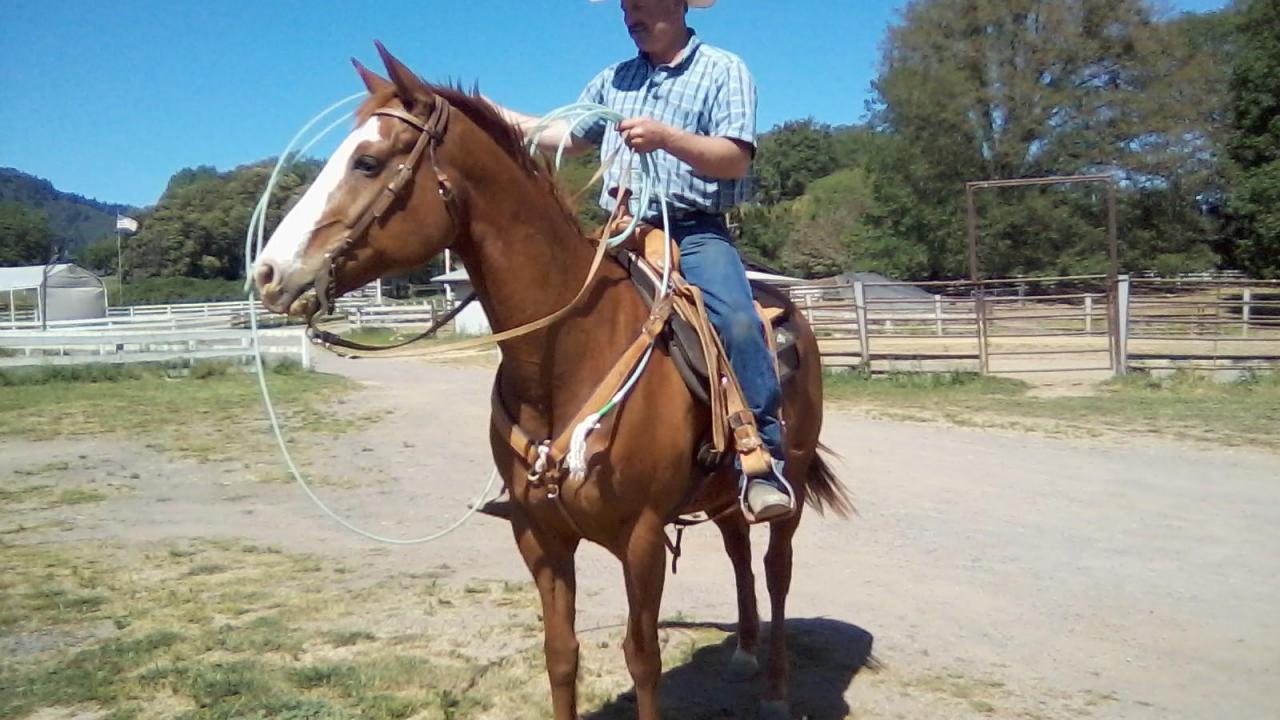
Laceration Repair Surgery Saves Horse’s Athletic Career
“Case of the Month” – February 2018
Nash, a 12-year-old American Quarter Horse gelding, is a roping horse in local competitions and also works for his family herding cattle. That career was in jeopardy recently after suffering a severe laceration to his lower lip that extended back to his jawline. His owners Maureen and Brian searched Nash’s stall for evidence of how the injury happened. While not certain it was the cause, the only possible culprit they could find was a rough edge on a food bowl that they hadn’t noticed before.
They immediately called their primary veterinarian who came to their ranch to repair the wound. However, after a few days, the wound was not healing properly. While Nash’s appetite was good, eating was causing the wound to rub against feed bins and the ground, causing the injured area to get contaminated. Nash’s primary veterinarian was out of town, so Maureen contacted two other area veterinarians who believed the wound had a good chance to heal on its own and to continue the use of antibiotics and cleaning the site daily. After a week of unsuccessfully trying to manage the wound, a third veterinarian was concerned that Nash’s wound would not heal properly on its own and suggested bringing him to UC Davis.
Maureen contacted Dr. Scott Katzman of the UC Davis Equine Surgery and Lameness Service, who examined photos of Nash’s injury and determined that he needed further surgical intervention to reconstruct the lip laceration. After discussing treatment options with Dr. Katzman, Maureen and Brian loaded up Nash and made the three hour drive to campus for evaluation and surgery.
During the surgical procedure, Dr. Katzman and equine surgery residents Drs. Thomas Cullen and Charlene Noll repaired the laceration and reconstructed Nash’s lip. After preparing the wound, it was closed in several layers with tension relieving quill sutures incorporated into the closure in an attempt to prevent another failed repair. Nash recovered from anesthesia without complication, and after one night of hospitalization, was able to go home.
Once back home, Nash was kept on stall rest for two weeks and was allowed 15-minute hand walks twice daily. As the wound healed, Dr. Katzman worked with Nash’s primary veterinarian to coordinate removal of the quill sutures initially, and removal of the remaining skin sutures one week later. Suture removal was performed in this manner to ensure the wound was adequately healed and to prevent the wound from opening again.
“We were so appreciative that Dr. Katzman did that, so we wouldn’t have to take another three-hour trip to Davis just to remove the stitches,” said Maureen.
Now two months removed from surgery, Nash is back to roping and herding. Maureen says she can’t even notice where the wound was.
“We’re so thankful for everything Dr. Katzman and everyone at UC Davis did for us and for Nash,” Maureen added. “Dr. Katzman was always very caring and always had plenty of time to answer our questions. He was never rushed in any of the information he volunteered. I would definitely recommend UC Davis to anyone.”
# # #
